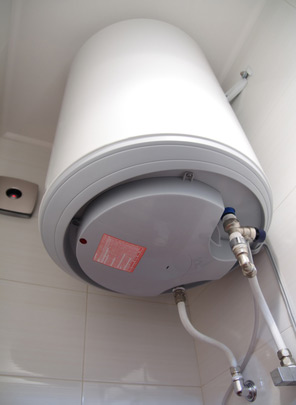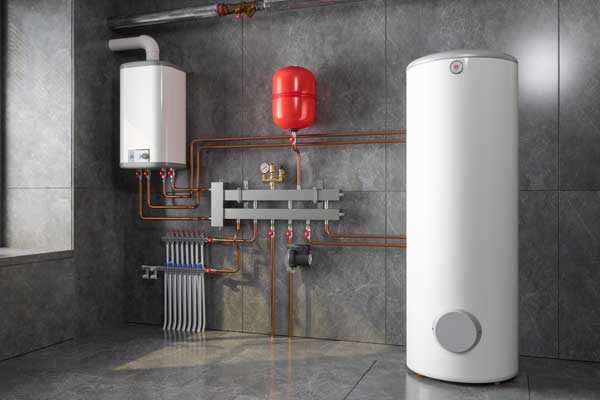Key Maintenance Tips for Your Home's Hot Water SystemStep-by-Step Steps to Caring for Your Home's Hot Water System
Key Maintenance Tips for Your Home's Hot Water SystemStep-by-Step Steps to Caring for Your Home's Hot Water System
Blog Article
What're your ideas about What Kind of Maintenance Do Water Heaters Need??

Warm water is necessary for everyday comfort, whether it's for a refreshing shower or cleaning dishes. To guarantee your warm water system runs efficiently and lasts much longer, routine upkeep is essential. This post offers sensible ideas and insights on just how to preserve your home's warm water system to prevent disruptions and pricey fixings.
Intro
Maintaining your home's warm water system might appear difficult, yet with a couple of easy actions, you can ensure it runs smoothly for several years to find. This overview covers whatever from understanding your warm water system to DIY upkeep suggestions and recognizing when to contact professional assistance.
Importance of Preserving Your Warm Water System
Normal maintenance not just expands the life expectancy of your warm water system but additionally ensures it operates successfully. Overlooking upkeep can cause lowered performance, higher energy expenses, and also early failure of the system.
Indicators Your Warm Water System Needs Maintenance
Knowing when your hot water system requires focus can protect against major issues. Look out for indicators such as inconsistent water temperature, unusual noises from the heating unit, or rustic water.
Purging the Hot Water Heater
Flushing your water heater eliminates debris accumulation, boosting performance and lengthening its life.
Monitoring and Changing Anode Rods
Anode poles protect against corrosion inside the container. Inspecting and replacing them when worn out is crucial.
Complex Issues Requiring Specialist Aid
Instances consist of significant leakages, electric problems, or if your hot water heater is continually underperforming.
Regular Professional Maintenance Perks
Expert upkeep can include extensive examinations, tune-ups, and guaranteeing conformity with safety requirements.
Evaluating and Adjusting Temperature Setups
Readjusting the temperature level setups ensures optimal performance and safety and security.
Do It Yourself Tips for Maintenance
You can carry out several maintenance jobs yourself to keep your warm water system in leading problem.
Checking for Leaks
Regularly inspect pipelines and connections for leakages, as these can cause water damage and higher costs.
Comprehending Your Hot Water System
Before diving right into maintenance tasks, it's valuable to comprehend the basic parts of your warm water system. Generally, this includes the hot water heater itself, pipes, anode rods, and temperature controls.
Month-to-month Upkeep Tasks
Regular month-to-month checks can assist catch small problems before they rise.
Checking Stress Relief Valves
Testing the stress relief valve guarantees it works correctly and protects against extreme pressure buildup.
Shielding Pipes
Shielding hot water pipelines decreases warmth loss and can save power.
When to Call a Professional
While do it yourself maintenance is valuable, some problems call for expert proficiency.
Verdict
Routine upkeep of your home's warm water system is vital for performance, durability, and price savings. By adhering to these suggestions and recognizing when to seek specialist aid, you can guarantee a trusted supply of hot water without unanticipated disruptions.
Water Heater Maintenance: The Basics
Maintaining your water heater will ensure it operates efficiently and has a longer lifespan. Neglecting regular maintenance can lead to costly repairs and an even bigger chunk of your savings if you have to replace it sooner than necessary. But there’s good news: Most water heater maintenance tasks are relatively simple and easy for homeowners with basic DIY skills.
Flush the Water Heater
Over time, sediment and minerals can build up in the tank, reducing its efficiency and potentially causing damage. To flush the tank, turn off the power or gas supply, attach a hose to the drain valve near the bottom and open the valve to drain the water until it runs clear. Ideally, flush the tank annually.
Replace the Anode Rod
The anode rod is a sacrificial metal rod that helps prevent corrosion inside the tank. Inspect and replace it every three to five years or per the manufacturer's recommendation. To replace the anode rod, turn off the power or gas supply, drain a few gallons of water from the tank, unscrew the old rod and replace it with a new one. If the anode rod is significantly corroded or covered in calcium buildup, it's a sign the water heater may need to be replaced soon.
Tune-Up
A yearly tune-up can help identify potential issues and ensure your water heater operates at peak efficiency. This typically involves checking the thermostat, burner assembly (for gas heaters) and any other components specified by the manufacturer. During a tune-up, the technician may also clean the burner and adjust the pilot light (for gas heaters) or examine the heating elements (for electric heaters).
How to Maintain Your Water Heater
Insulate the tank. Insulating the tank can improve energy efficiency and reduce heat loss, saving you money on energy bills. You can purchase precut insulation blankets designed specifically for water heaters or use standard fiberglass insulation wrapped securely around the tank. Check the temperature. The recommended water temperature for most households is around 120 degrees Fahrenheit (49 degrees Celsius). Higher temperatures can increase energy costs and potentially cause scalding. Use a kitchen thermometer to check the temperature at the faucet nearest the water heater. Monitor water pressure. Excessive water pressure can strain the water heater and cause leaks or even tank failure. Install a pressure-reducing valve if necessary. The ideal water pressure range is between 60 and 70 PSI (pounds per square inch). Test the temperature and pressure (T&P) relief valve. The T&P relief valve is a safety feature that releases pressure if the tank gets too hot or the pressure builds up too high. Test it annually by lifting the lever and allowing a small amount of water to release. Replace the valve if it doesn't release water or reseal properly. Check for leaks. Regularly inspect the tank, pipes and fittings for leaks or corrosion. Deal with issues promptly to prevent further damage. Even a small leak can lead to significant water damage over time. Consider a tankless water heater. If your traditional tank-style water heater is nearing the end of its lifespan ( typically 10 years), consider replacing it with a tankless water heater. These units heat water on demand, reducing standby energy losses and potentially saving you money on your energy bills. Schedule professional maintenance. While homeowners can perform many water heater maintenance tasks, it's still a good idea to schedule professional maintenance every few years. A plumber or HVAC technician can thoroughly inspect the unit, identify potential issues and ensure it operates safely and efficiently. https://www.homeserve.com/en-us/blog/home-improvement/hot-water-heater-maintanence/

Do you really like more info about How to Maintain a Hot Water Heater in a Few Simple Steps? Write a short review down the page. We will be glad to listen to your opinion about this blog. In hopes to see you back again before long. Sharing is nice. You just don't know, you may very well be doing someone a favor. Thank you for your time. Don't hesitate to visit our site back soon.
Get Quote Now Report this page